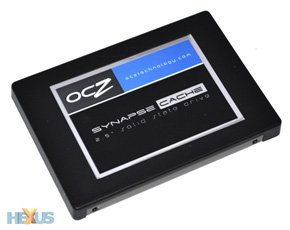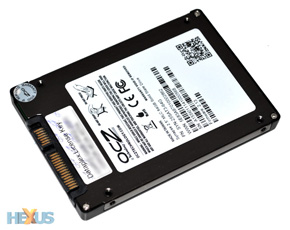Introduction
Remember the RevoDrive Hybrid we reviewed a few weeks back? We called it "quite possibly a glimpse at the future of high-speed, high-capacity storage", but added that its current limitations made it difficult to recommend.
The idea of caching regularly-used data on a high-performance solid-state drive made a lot of sense, but OCZ's first Hybrid solution lacked flexibility. It couldn't be used with any operating system other than Windows 7, it wouldn't serve as a cache for any existing storage devices, and at almost £400 it wasn't exactly cheap.
The obstacles were tough to ignore, but as it turns out, OCZ now has an alternative that gets around some of those limitations and offers more widespread appeal.
It's dubbed the Synapse, and it's essentially a 2.5in SSD that plugs into (almost) any existing system to act as a high-speed cache.
The advantage here is that the SSD caches what's already on your existing hard drive, so you needn't worry about re-configuring your entire storage subsystem or throwing out your previous storage device. Simply add the Syanpse to an available SATA 6Gbps port and it'll begin to cache what's on your primary hard disk. It is, for all intents and purposes, a relatively-easy drop-in upgrade.
And it isn't as pricey as the ultra-high-end RevoDrive Hybrid, either. At launch, the Synapse drive is available in 64GB and 128GB capacities, priced at roughly £120 and £200, respectively.
That's not exactly our idea of cheap storage, mind you, but remember that the Synapse acts as a cache for your existing hard disk. If you're already armed with 1TB of storage, the Syanpse effectively speeds up the whole lot. Technically, you're not paying £120 for 64GB of storage, you're paying £120 to speed up your existing hard disk - it's not a capacity upgrade, it's a performance increase.

So how does it work? Well, the magic isn't in the hardware. Underneath its lid, the Syanpse is essentially a second-generation SATA 6Gbps SandForce SSD. There's a SandForce SF-2281 controller at the heart of all the action, and in our 64GB review sample it's partnered with eight 25nm asynchronous NAND flash memory devices weighing in at 8GB apiece.
That's the 64GB capacity accounted for, but what's interesting - and in some ways unfortunate - is that OCZ has set aside 50 per cent of NAND for over-provisioning. Caching is a write-intensive task, and the high over-provisioning is in place to maintain long-term performance and reliability. We're all for reliability, but as a result of the over-provisioning, the "64GB" drive actually provides a cache size of 32GB.
Should OCZ be marketing the drive as a 64GB model when in fact the cache is technically half that size? That's questionable, but let's move on to where the magic really takes place - the software.











